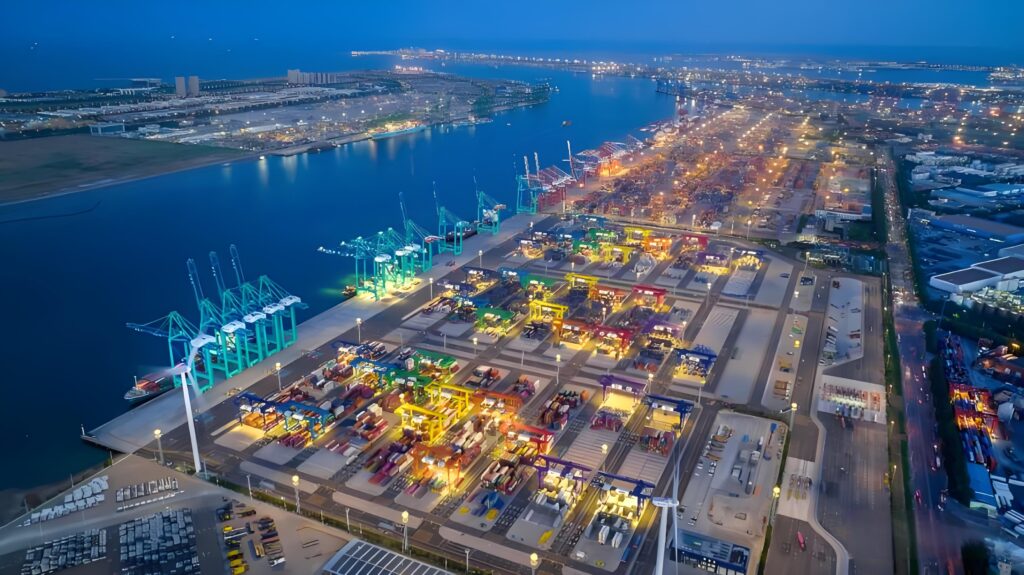Global trade has been growing rapidly, and ports are under increasing pressure to move goods efficiently. However, port congestion has become a persistent challenge, leading to delayed shipments, increased operating costs, and environmental concerns. As logistics demands continue to surge, traditional scheduling and transportation methods can no longer keep up. To address this, forward-thinking ports are turning to autonomous container trucks and AI-powered dispatching systems as a transformative solution.
Оглавление
The Growing Problem of Port Congestion
Ports are the heart of international commerce, but they often face bottlenecks due to limited labor, inefficient coordination, and outdated infrastructure. According to a 2023 report by the World Bank, average container dwell times have increased significantly in major global ports, especially in Asia and North America. This congestion not only slows down operations but also creates ripple effects across entire supply chains.
Enter Autonomous Container Trucks
Autonomous container trucks, also known as unmanned straddle carriers or driverless container movers, are designed to transport containers within terminal yards without human drivers. Equipped with sensors, cameras, GNSS RTK positioning, and onboard computing systems, these trucks can navigate complex port environments safely and efficiently.
Key benefits include:
- Работа в режиме 24/7 without fatigue or shift limitations
- Improved safety by reducing human error
- Cost savings on labor and fuel through optimized driving
- Reduced emissions with electrified drivetrains and efficient routing
China’s major ports, such as Qingdao and Ningbo, have already deployed autonomous trucks at scale, showing promising results in boosting throughput and reducing operating costs.
AI Dispatching: The Brain Behind Smart Port Logistics
While autonomous vehicles form the physical backbone, AI dispatching systems serve as the operational brain. These systems use real-time data, predictive algorithms, and optimization models to:
- Allocate resources dynamically based on traffic and container flow
- Predict congestion points and reroute trucks accordingly
- Synchronize tasks between vehicles, cranes, and loading zones
- Minimize idle time and unnecessary travel
AI dispatching can reduce port turnaround time by as much as 20–30%, according to industry case studies, especially when combined with vehicle-to-everything (V2X) communication and 5G connectivity.
Real-World Implementation and Market Trends
Several smart ports around the world have adopted autonomous container transport systems integrated with AI dispatching:
- Port of Tianjin (China) has launched the world’s first zero-carbon terminal operated by autonomous trucks and AI logistics.
- Rotterdam Port (Netherlands) is testing AI-assisted dispatch control to streamline truck flows.
- Port of Los Angeles (USA) is exploring pilot programs combining 5G networks with AI scheduling platforms.
These examples reflect a growing trend toward smart port ecosystems, where automation and data-driven intelligence replace legacy systems.

Integration with 5G, GNSS RTK, and Edge Computing
To support such sophisticated operations, underlying technologies such as 5G networks, centimeter-level GNSS RTK positioning, and edge AI computing are essential.
- 5G ensures ultra-low latency and high data throughput, enabling real-time coordination between trucks and control centers.
- RTK positioning provides the accuracy required for tight maneuvering and precise container handling.
- Edge computing processes data locally on vehicles and sensors, allowing for instant decision-making and reduced reliance on cloud networks.
These technologies make the autonomous + AI dispatch solution both scalable и resilient to network disruptions.
Проблемы и соображения
Despite the benefits, some hurdles remain:
- High initial investment in autonomous fleets and infrastructure
- Regulatory constraints and safety standards that vary by region
- Need for ecosystem integration (cranes, yard systems, backend software)
However, as costs decline and interoperability improves, these challenges are becoming more manageable.
Conclusion: A New Era of Intelligent Port Operations
Autonomous container trucks and AI dispatching represent a paradigm shift in port logistics. Together, they address the root causes of port congestion—manual inefficiencies, unpredictable flows, and lack of coordination—by introducing a flexible, intelligent, and scalable framework.
As the global logistics industry continues to digitalize, this combined solution is no longer a futuristic concept but a practical and proven tool for ports aiming to stay competitive. Investing in smart logistics today will shape the success of tomorrow’s supply chains.
